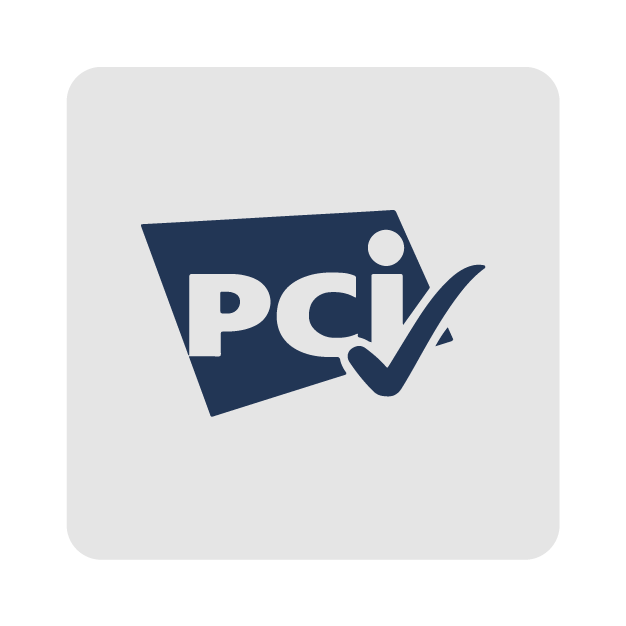I. Introduction
Third-Party Risk Management (TPRM) is a critical component of any healthcare organization’s cybersecurity and compliance strategy. It involves assessing, managing, and monitoring the risks associated with third-party vendors or other external organizations that have access to sensitive patient data or financial information.
This process ensures that all vendors are compliant with applicable regulations, such as HIPAA, GDPR, CCPA, etc., while also mitigating potential security threats from malicious actors.
In recent years there has been an increased focus on regulatory enforcement for Healthcare TPRM due to high-profile data breaches at healthcare organizations resulting from poor vendor management practices. A summary of recent enforcement actions includes fines imposed by the Office for Civil Rights (OCR), state laws passed in response to the Equifax breach, settlement agreements between healthcare providers and OCR over inadequate HIPAA safeguards, and more.
II. Key regulations governing Healthcare TPRM
A. Health Insurance Portability and Accountability Act (HIPAA)
The Health Insurance Portability and Accountability Act of 1996 (HIPAA) is the primary federal law governing the privacy, security, and disclosure of protected health information (PHI). HIPAA requires healthcare organizations to implement a number of measures to protect patients’ PHI from unauthorized access or use by third-party vendors. These measures include conducting risk assessments, developing policies for data sharing with external entities, establishing breach notification procedures, implementing technical safeguards such as encryption and two-factor authentication for remote access services, and more.
B. Other Federal and State Privacy Laws
In addition to HIPAA, there are other federal laws that regulate how patient information can be used by third parties, including the HITECH Act which addresses electronic health records (EHRs), 21 CFR Part 11 which governs computer systems used in clinical trials research studies, Fair Credit Reporting Acts (FCRA), Gramm–Leach–Bliley Act(GLBA), Children’s Online Privacy Protection Rule (COPPA) among others. It is important to note that several states have also enacted their own privacy laws regarding the protection of consumer data such as the California Consumer Privacy Act (CCPA) & Nevada Senate Bill 2205: Protecting Consumers’ Private Information Amendments Law.
Organizations must ensure compliance with all applicable state laws when working with third parties who have access to consumers’ personal data in order to avoid potential fines or sanctions from regulatory agencies like OCR or FTC.
C. CRPA & CCPA – California’s Consumer Privacy Protection Laws
California passed its landmark consumer privacy legislation – The California Consumer Privacy Protection Law – in 2018 which grants citizens greater control over their personal information collected online by organizations operating within the state borders. This law was further amended in 2020 with the passage of AB 375, known as The California Consumer Personal Data Disclosure & Security Law commonly referred to as CRPA.
D. System and Organization Controls (SOC) 2 in Healthcare TPRM
SOC 2 is a set of criteria by the AICPA for assessing service organizations’ internal controls, focusing on security, availability, processing integrity, confidentiality, and privacy. In healthcare, SOC 2 plays a crucial role in third-party risk management (TPRM) as it provides a standardized framework to evaluate vendors’ controls over protected health information (PHI).
Healthcare organizations should require third-party vendors to provide a SOC 2 Type II report, which offers insights into their security practices and control environment. By incorporating SOC 2 into their TPRM, healthcare organizations can better identify and mitigate potential risks, ensuring compliance with regulations like HIPAA, HITECH Act, and state privacy laws while safeguarding patient data.
III. Regulatory enforcement challenges in Healthcare TPRM
A. Complexity of Healthcare Supply Chain:
The healthcare industry is highly complex and fragmented, with a large number of third-party vendors providing services such as medical billing, software development, data storage, and analytics. Each vendor in the supply chain has access to sensitive patient information which creates a challenge for managing security risks associated with these external entities.
B. Data Privacy and Security Concerns:
Healthcare organizations must ensure that all vendors comply with applicable regulations regarding the privacy and security of PHI in order to protect patients’ right to confidentiality. This requires continuous monitoring of third-party vendors through risk assessments or audits to identify potential vulnerabilities before they can be exploited by malicious actors or other unauthorized persons.
C. Compliance With Multiple Regulations:
As previously mentioned, there are numerous federal laws governing different aspects related to HIPAA compliance such as:
● HITECH Act (electronic health records)
● 21 CFR Part 11 (computer systems used clinical trials research studies)
● Fair Credit Reporting Acts (FCRA)
● Gramm–Leach–Bliley Act(GLBA)
Organizations must also adhere to all state-specific laws like California Consumer Privacy Protection Law (CCPA) & Nevada Senate Bill 2205 when dealing with consumer data from customers within those states. To make matters more difficult many companies operating across multiple jurisdictions need to consider international regulatory requirements depending on where their customers or business operations are located.
D. Rapidly Evolving Technology Landscape:
The technology landscape surrounding healthcare TPRM is constantly evolving due to rapid advancements in digital tools, cloud computing capabilities, artificial intelligence applications, and automation techniques, making it difficult for organizations to keep up with the latest trends while maintaining compliant practices at all times. New threats emerge every day exposing businesses to further vulnerabilities that they may not have anticipated prior. This makes staying ahead of cyber criminals an ongoing effort requiring dedicated resources and expertise.
IV. Best practices for compliance and risk mitigation
A. Vendor Risk Assessment and Selection:
It is essential for healthcare organizations to assess the risks associated with each third-party vendor before any agreements are made. This process should include gathering information on the vendor’s business operations, financial stability, cybersecurity practices, and compliance history in order to gain a full understanding of the potential risks posed by working with them. Before signing any contracts or engaging in data-sharing activities it is important that all vendors meet minimum security standards set forth by HIPAA or state laws such as CCPA and CRPA.
B. Implementing Robust Security and Privacy Controls:
Once an organization has identified a trusted third-party partner they must ensure that appropriate controls are put into place to protect patient data from unauthorized access or misuse. These measures may include encrypting PHI when transmitting between systems, setting up two factor authentication requirements for remote access services, establishing audit logs to track user activity, and developing detailed incident response plans in case of breach incidents. All these safeguards must be regularly tested to ensure they remain effective against evolving threats.
C. Regular Monitoring and Auditing of Third-Party Relationships:
Organizations should not rely solely on initial risk assessments but instead, continuously monitor their third-party relationships through regular audits or reviews in order to identify potential issues before they become more serious problems. This process can also help organizations stay ahead of regulatory changes so that necessary adjustments can be made quickly without compromising patient safety. Some specific types of monitoring activities may include verifying adherence to contractual obligations, assessing corporate structure changes which could create new vulnerabilities, and testing system interfaces used for data transfer/exchange between parties.
D. Training & Education Of Staff On Regulatory Requirements:
Healthcare organizations should provide training programs for staff members who interact with vendors about applicable regulations such as HIPAA, GDPR, or other relevant state privacy laws like CCPA & CRPA so that everyone understands their responsibilities under the law when handling sensitive patient information shared outside the organization’s direct control.
V. The role of technology in strengthening regulatory enforcement
A. Automation of Compliance Processes:
Healthcare organizations can benefit from the use of automated tools and processes to ensure compliance with various regulatory requirements related to patient data privacy and security. Automating certain tasks such as tracking changes in vendor contracts or performing periodic risk assessments can save time, effort, and resources while also providing greater accuracy in monitoring adherence to HIPAA standards or other applicable regulations. Automated systems may also be used for alerting personnel when potential risks are identified so that they can take immediate action if necessary.
B. Data Analytics for Risk Identification & Mitigation:
Organizations should leverage available technology solutions to help them identify areas of risk within their third-party ecosystem before a breach occurs. This can be done by using analytics on large datasets which contain information about vendors, customer interactions, and user activities — all helping paint a comprehensive picture of potential vulnerabilities across the organization’s supply chain. By applying advanced algorithms like machine learning, it is possible to detect anomalous behavior early on allowing businesses ample time to prepare appropriate response plans accordingly.
VI. The consequences of non-compliance
A. Financial Penalties and Sanctions:
Non-compliance with HIPAA or any other applicable regulations can result in hefty financial penalties imposed by regulatory bodies such as the Office of Civil Rights (OCR). These fines may range from thousands to millions of dollars depending on the severity and nature of a violation, however, even minor infractions can carry significant costs due to investigation fees and associated administrative expenses. Organizations must also face potential sanctions including suspension or termination of business operations if multiple violations occur over time.
B. Legal Consequences & Potential Lawsuits:
Healthcare organizations found guilty of willful neglect or intentional misuse of PHI are subject to criminal prosecution which could lead to 10 years of imprisonment (or more) for individuals responsible for the breach. In addition, civil lawsuits may be filed by patients against organizations who fail their duty to protect confidential data, thus putting them at risk for identity theft or fraud. Such cases not only hurt an organization’s reputation but also result in costly legal proceedings that further impact its bottom line.
C. Reputational Damage:
Even if no monetary damages are incurred, non-compliance with regulatory requirements can have serious consequences on healthcare providers’ public image/reputation leading to loss of customers, donors, or investors — all negatively affecting their long-term success. Additionally, a lack of compliance indicates poor security practices which may discourage new users from joining the platform since they do not trust they will remain protected while using it.
D Impact On Patient Safety And Care:
Negligent handling of patient information has direct implications for the quality of care provided to patients because it undermines trust between healthcare professionals and those receiving treatment. This makes it difficult to provide the best possible services tailored to individual needs. Mistakes resulting from mishandling data records can lead to misdiagnoses, unnecessary treatments, and delayed responses during emergency situations – all potentially putting lives in danger unnecessarily.
VII. Future trends in regulatory enforcement for Healthcare TPRM
A. Strengthening of Enforcement Powers:
Regulatory bodies are increasingly granting themselves greater powers to enforce compliance with healthcare privacy and security regulations such as HIPAA or GDPR. This includes the ability to issue hefty fines for violations, conduct on-site inspections, or even impose criminal penalties in extreme cases. Such measures demonstrate a growing commitment from governmental organizations to protect patient data and ensure that healthcare providers take appropriate steps necessary to maintain secure operations at all times.
B. Risk Management-Based Approach To Compliance:
As business models become more interconnected with vendors, suppliers, and partners, traditional approaches towards TPRM (Third Party Risk Management) are becoming insufficient when it comes to ensuring regulatory compliance. By taking a risk management-based approach – one which focuses on the identification, assessment, monitoring, and control of third-party relationships – organizations can better understand their potential liabilities while also staying compliant with applicable laws across multiple jurisdictions globally.
C. Greater Accountability For Data Stewardship:
Organizations must now take responsibility for properly protecting confidential information shared between them and any third parties they interact with regardless of geographical location. This will mean not just following relevant regulations like HIPAA but also developing comprehensive policies and procedures detailing how customer data should be handled by everyone involved in its processing lifecycle — from creation through disposal.
D. Emphasis On ESG Factors In Vendor Selection Processes:
There’s an increasing focus on environmental, social, and governance factors when assessing vendor risk due to the need for businesses to act responsibly both ethically and financially when dealing with sensitive customer information externally. As part of this process, organizations should consider key criteria such as labor standards used by prospective partners along with their overall sustainability practices so that these align company values/goals regarding responsible data stewardship before entering into any agreements.
VIII. Conclusion
A. The Adoption of Proactive Risk Management Strategies:
Healthcare organizations must adopt proactive risk management strategies to protect themselves from non-compliance with applicable regulations and potential data breaches. This should include rigorous vendor selection processes, conducting regular security assessments on vendors, and monitoring contracts for any changes that could create new vulnerabilities or other compliance issues. Organizations should also consider investing in automated solutions that can help automate certain processes, such as contract tracking and performing periodic risk assessments which can save time and resources while also providing more accurate results when assessing HIPAA standards or other applicable regulations.
B. The Importance Of Training & Education Programs:
It is essential for healthcare providers to provide training programs for staff members who interact with third-party vendors so they understand their responsibilities under the law when handling sensitive patient information shared outside the organization’s direct control. Such programs should cover relevant regulations such as HIPAA, GDPR, or other state privacy laws like CCPA and CRPA so everyone is aware of what actions need to be taken if a violation occurs. Businesses should also make sure employees are up to date on changes regarding these rules over time as well in order to remain compliant throughout the operation life cycle.
C. Continuous Monitoring Of Third Parties:
To ensure regulatory compliance across all aspects of their operations including those involving third parties, it is important that healthcare organizations conduct continuous monitoring of these external relationships through tools like data analytics and automation systems mentioned earlier. By doing this, companies can identify areas of vulnerability within their supply chain before an actual breach has occurred. This will allow them ample time to prepare appropriate response plans accordingly if needed avoiding potentially costly fines imposed by regulatory bodies down line due to lack of preparedness during audits investigations.
If your healthcare organization needs help with ensuring compliance and mitigating risks, our team at Papaya Technologies is here to help.






















